Winners of the Water Toxicity Sensor Challenge– Phase 1
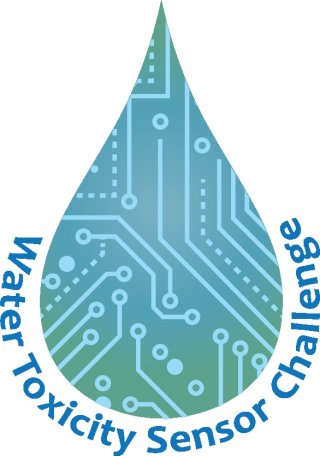
On this page:
- Challenge Description
- Challenge Winners and Honorable Mentions
- Judging Criteria
- Webinar
- Challenge Partners
Challenge Description
EPA and six federal and local cosponsoring organizations announce the Phase 1 winners of the Water Toxicity Sensor Challenge, designed to stimulate the advancement of novel toxicity-based sensors for water monitoring.
Background
Monitoring the increasing number of pollutants in source waters is an ongoing concern for water treatment systems and water resource managers. Pesticides, heavy metals, personal care products, natural toxins such as those from cyanobacteria, and a host of other organic and inorganic chemical pollutants and their products all can increase toxicity in water.
Current methods for detecting and identifying many of these contaminants are expensive, time-consuming, and require the use of specialized laboratories. The numbers of sensors, instruments, tests, labs, personnel, and other costs can become an economic burden for water system managers and water resource managers. If the identity of the potential contaminant is unknown, this process becomes even more complex and cost prohibitive.
The Challenge
To help meet the need for better ways to monitor toxicity in water, EPA and partners launched the Water Toxicity Sensor Challenge.
The challenge calls on innovators to develop a sensor that can identify whether there are chemical pollutants and natural toxins in various types of water much faster and less expensively than current lab methods for detecting individual, specific chemicals. Certain chemicals can activate various toxicity pathways inside living cells. This causes a disruption to normal biological processes, like breathing or digestion, which can lead to harmful health effects such as diseases like cancer.
This Challenge calls for a water sensor that can detect the activation of those toxic pathways in the presence of various harmful chemicals and natural toxins.
The Challenge has two phases.
- Phase 1, launched in 2021, is a theoretical, or design challenge requiring an in-depth written proposal but not requiring development of a prototype. Three Phase 1 winners and two honorable mentions have been selected for awards.
- Phase 2, expected to launch in late 2022, is being developed to further encourage the development of water toxicity sensors. First phase winners and honorable mentions will be invited to submit prototypes of their technologies for evaluation in a second phase challenge, however the challenge is open to any interested solver.
Phase 1 Challenge Winners
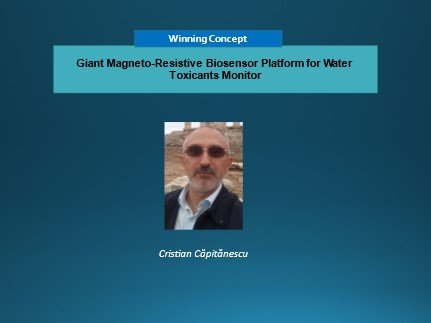
Giant magnetoresistance (GMR) is a quantum mechanical magnetoresistive effect. It describes the large change in the electrical resistance which is induced by the application of a magnetic field to thin films composed of alternating ferromagnetic and nonmagnetic layers. This effect, which was discovered in the

1980s and led to a Nobel prize in 2007, is routinely used to make magnetic field sensors, including ones for hard disk drives, biosensors, and other devices. This effect can be used to create spin valve sensors, which transduce changes in the local magnetic field into electrical signals
In this propose, this advanced sensor technology would be combined with conventional receptor-based assays for estrogenic or aryl hydrocarbon contaminants to develop a low-cost sensor.

In this proposal, a library of fluorescent E. coli strains will be analyzed for their ability to respond to pesticides, heavy metals, and organophosphates exposure. A set of at least 100 strains will be used for the sensor, and artificial intelligence will be used in the development of a machine learning algorithm that will be trained by controlled data to be able to interpret cellular signals and inform the user of what class of contaminant is present and at what concentration. These strains will be integrated into the existing “Qube” biosensor platform, which has already been validated to be effective in real-world conditions in field studies.
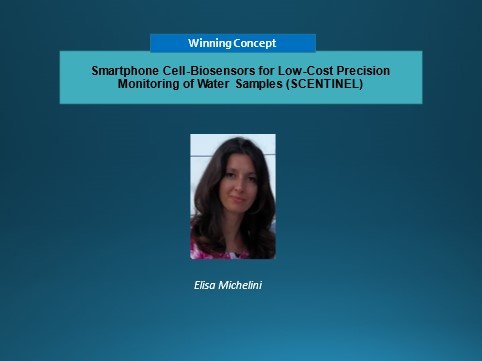
In this proposal, a suite of existing bioluminescent cell-based toxicity assays would be developed for use in a cassette format. Different combinations of these cassettes could then be loaded on to a platform and water samples added for evaluation. Since the assays are light emitting, a smartphone can be used to
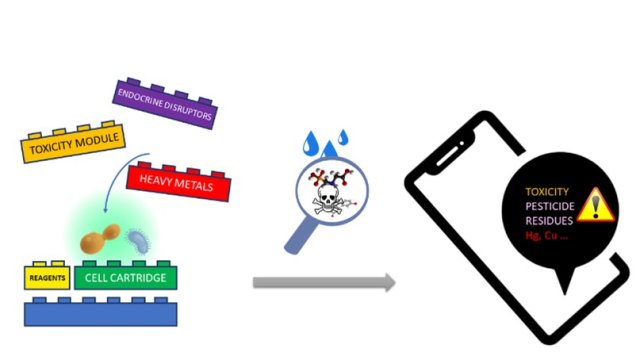
evaluate the intensity of the signal. This approach would allow for water samples to be simultaneously evaluated for toxicity responses in a variety of pathways. In this proposal, the assay would focus on bio-assays able to respond to heavy metals, genotoxic compounds and endocrine disruptors.
Phase 1 Honorable Mentions

In this proposal, the bioassay component design included immobilization the urease enzyme, which is inhibited by the heavy metals mercury and lead on the detector. The presence of these heavy metals would therefore affect the enzyme and result in a signal. As designed, the sensor was demonstrated to be low cost, portable, easy to use and long period (5 years) of useful life. Initial testing demonstrated the
effectiveness of this approach.

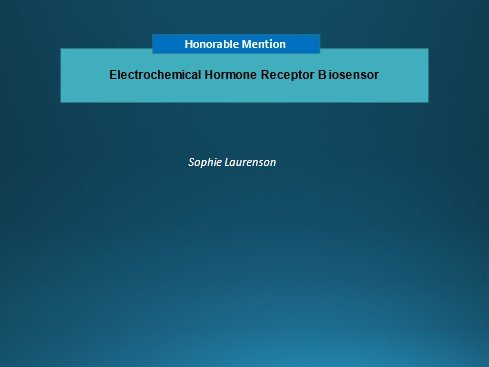
This proposal makes use of the fact that hormone receptors that are exposed to estrogenic compounds form dimers that can bind DNA. Specifically, water samples containing environmental pollutants can be added to a disposable cartridge via a sample port. If these pollutants are estrogenic compounds, they can bind hormone receptor monomers in the sensor; this causes the receptors to become activated, dimerize and bind nucleic acid strands that are immobilized on the detector. The resulting change in capacitance and impedance would result in a signal. This novel approach has intriguing possibilities for the detection of estrogens in the environment.
Webinar
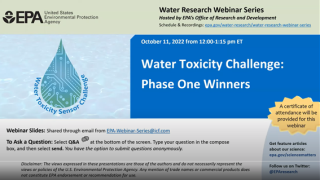
Phase 1 Winners of the Water Toxicity Sensor Challenge
Originally presented October 11, 2022
View the webinar recording here
Phase 1 Judging Criteria
Judging Criteria:
- The system must measure the activation of one or more toxicity pathways that are linked to adverse health outcomes caused by environmental pollutants in water, such as hepatic toxicants, endocrine disrupting compounds, pesticides, heavy metals, and/or other contaminants of health concern.
- If multiple toxicity pathways are targeted, the system should provide information as to which pathway is activated to produce a signal.
- The system should function in a range of chemical concentrations of relevance to human health. It should also define, if available, lower and upper limits of response and quantification for positive controls for each pathway (i.e., the linear dynamic range (LDR)).
- The system should be functional under conditions normally associated with various water types (e.g., varying levels of microorganisms, pH, alkalinity, hardness, humic and fulvic acids, dissolved solids, turbidity, etc.), and account for associated matrix effects on sensor response. That is, the design should be compatible with operation and deployment of the sensor in field operations as opposed to a clinical setting.
- The system should be designed in such a way that the eventual final product would incorporate internal (possibly automated) quality assurance protocols (e.g. calibration) and define precision and accuracy for signals reported by the sensor.
- All sample handling/preparation requirements should be minimal and/or accounted for in the sensor design (i.e., automated).
The following are not required for an award but would be “nice to have”:
- Demonstrated performance in a controlled (i.e., laboratory) setting for detection of various contaminants via perturbations of pathway(s).
- Provide continuous measurements to remote observers in real time.
- Extended deployment (weeks to months), with little-to-no maintenance required during deployment, prior to performance declining to below specified tolerance limits.
- Automatic self-detection of degradation of performance with alerts to the operator of this condition.
Challenge Partners for Phase 1
The Water Toxicity Sensor Phase 1 Challenge is a collaborative effort of the U.S. Environmental Protection Agency, the United States Geological Survey (USGS), the National Oceanic and Atmospheric Administration (NOAA), the U.S. Army Medical Research and Development Command (USAMRDC), the Greater Cincinnati Water Works, and the Water Research Foundation.
